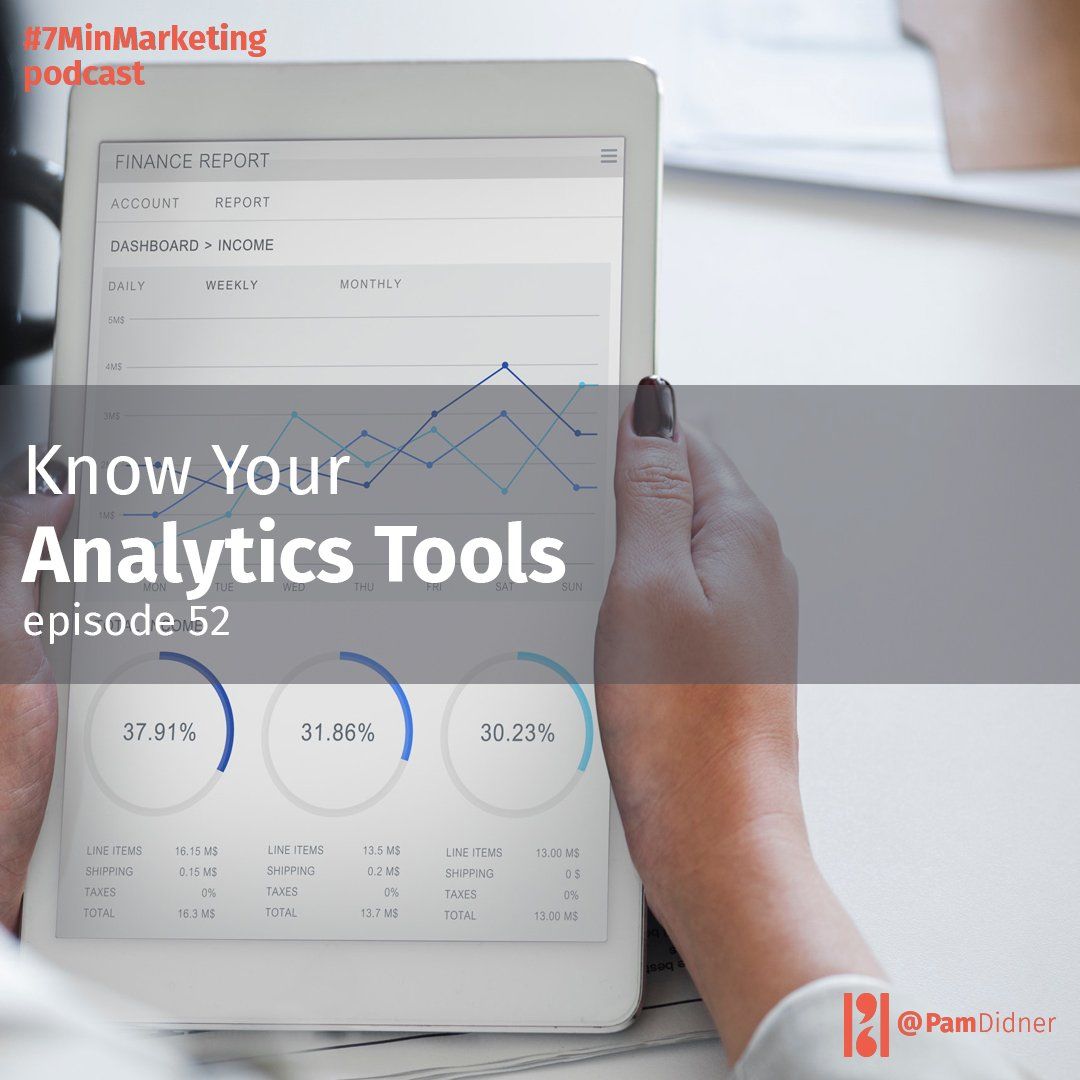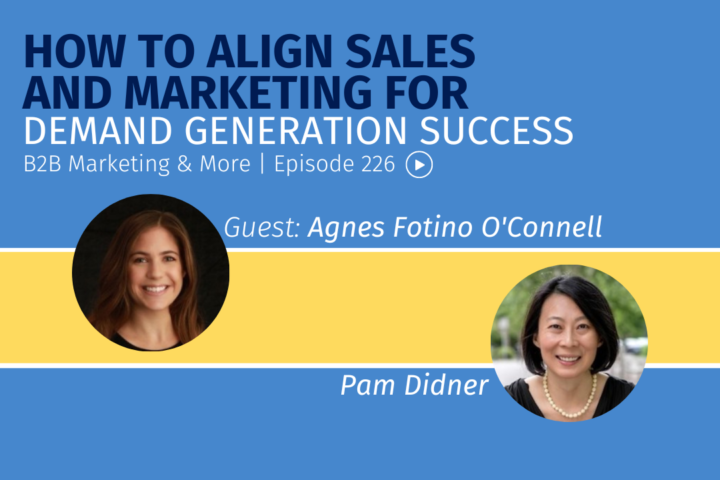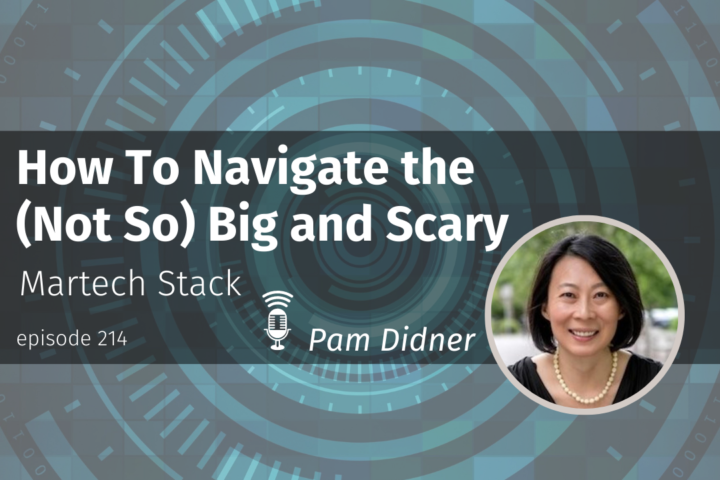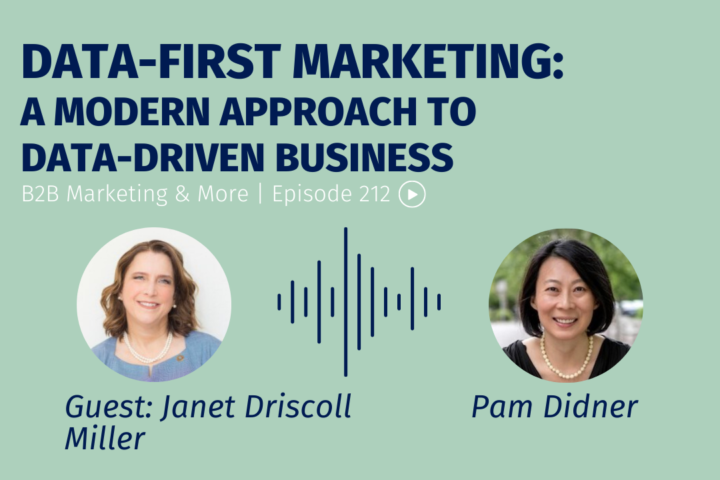
Welcome to another episode of 7-Minute Marketing with Pam. My name is Pam Didner. I love sharing a little dose of B2B, digital, content marketing and sales enablement, seven minutes at a time.
Google Analytics possibilities
Many businesses use Google Analytics (GA) to measure website traffic, paid search performance, organic search optimization, and even track sales and conversions. So, how much do you know about Google’s Analytics? Well, I am the first to confess: I didn’t know much about GA. My GA knowledge was limited to the measurement of website traffic such as page views, bounce rates, top 10 most viewed content, numbers of visitors from different countries and content views by devices. That was about it. But I know that Google Analytics can do so much more.
When I was in a corporate role, I had a team who would prepare the analytic reports and recommendations. I would review them, mostly, just to approve their recommendations on what was needed to be optimized as next steps. I didn’t have to get my hands dirty. Mostly, I couldn’t judge if the recommendations were good or bad, because I didn’t do a deep dive into data to understand how the analysis was done. I took the team’s recommendations at face value.
I ran into a similar issue when I started working for myself. To know what questions to ask is one thing, but I didn’t know how to customize or use GA effectively to find the answers on my own. I hired someone to help me out. We tried to standardize the dashboard, but I had different questions every time, whenever we reviewed the dashboard. By asking different questions, I was trying to view data in a different light to see if I could find other ways to better optimize the website or drive higher traffic. Different questions mean different dashboards. He would pull different reports and we would schedule several follow-up meetings. Since I paid him by hours, it got expensive very quickly.
Google Analytics courses
I decided it was time to take the issue into my own hands and really understand how GA works. First, I went to YouTube to find any Google Analytics courses. Many of them require me to pay. I was like, there got to be a better and cheaper way to learn. So, I went to Google directly. Viola! Google offers systematic courses for their users in the Google Analytics Academy. You can find Beginner and Advanced courses right inside the analytics tool.
Each course is divided into 4-6 modules and each module offers several 5-10 minute videos or demos that you can watch. It took me about 5 hours to go through the Beginner and Advanced courses. I have to say that it was incredibly useful and beneficial. After that, I understand the methodology behind the analytics, the definitions of different terms they use, even the layout of their default dashboards.
When I was watching the course videos, I had my Google Analytics account open and tested the instructions and steps real-time. It was 5 hours well spent.
Here are my takeaways from completing the courses
- For some analytics tools, you can take the dashboard as it is. For scalable and fluid analytics tools that you can personalize and customize, you need to understand how the tools work and their methodologies in order to gain insights into your data.
- Business goals don’t necessarily directly translate to the goals in your analytics tools. You need to set the goals up in a way that tools can be used to track relevant metrics.
- You need to put in the time to learn and use the tools. The tools are as good as gold, but only if you use them on a regular basis.
- Using tracking codes is super important. It’s a way to tell your analytics tools what information to gather.
I started to understand the relationships between reports and the structure of raw data. My new found understanding of GA led to the restructuring of my own dashboard, especially, goal setting and purchase funnel conversions.
Although I have business goals in terms of revenue and new customers, my goals in Google Analytics focuses on conversions, a number of subscribers, content downloads, and schedule meetings. Business goals and Google Analytics goals don’t exactly translate one-to-one. Yet, I am able to make connections between Google Analytics goals and business goals.
The greatest benefit of digital marketing is the ability to understand prospects’ digital footprint and analyze the data to offer a better customer experience. To analyze the data, we need to understand our tools.
Please, send me your marketing questions and thoughts here or via Twitter @pamdidner.
Be well. Until next time.



